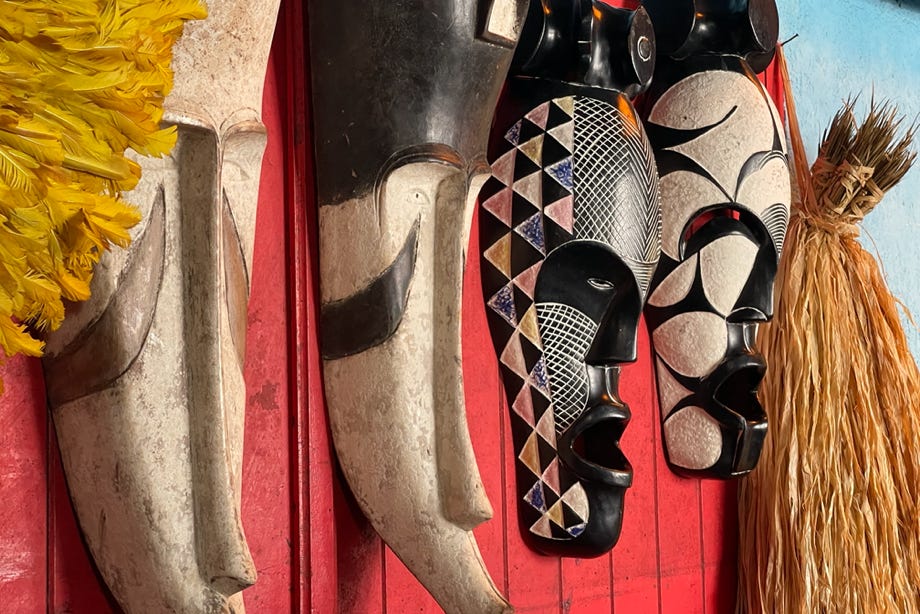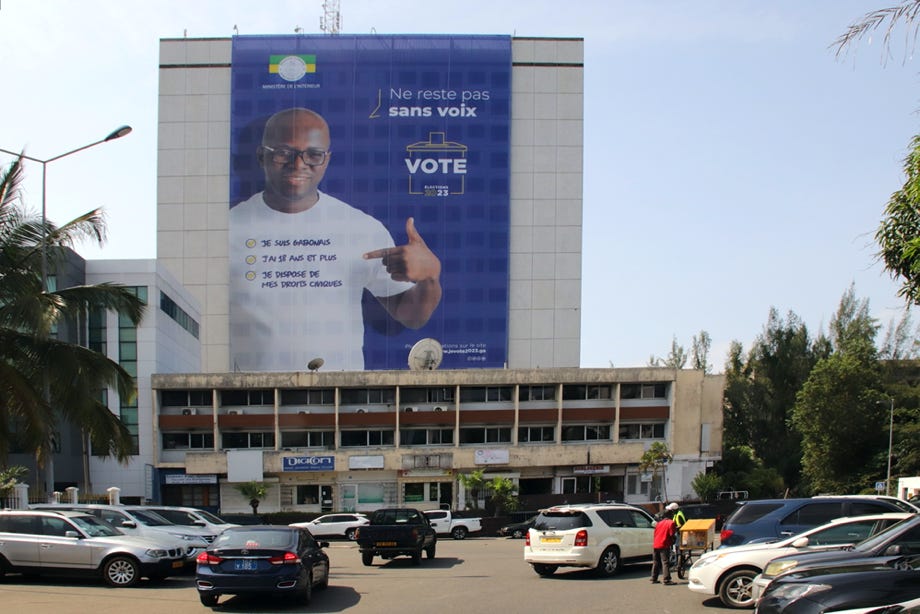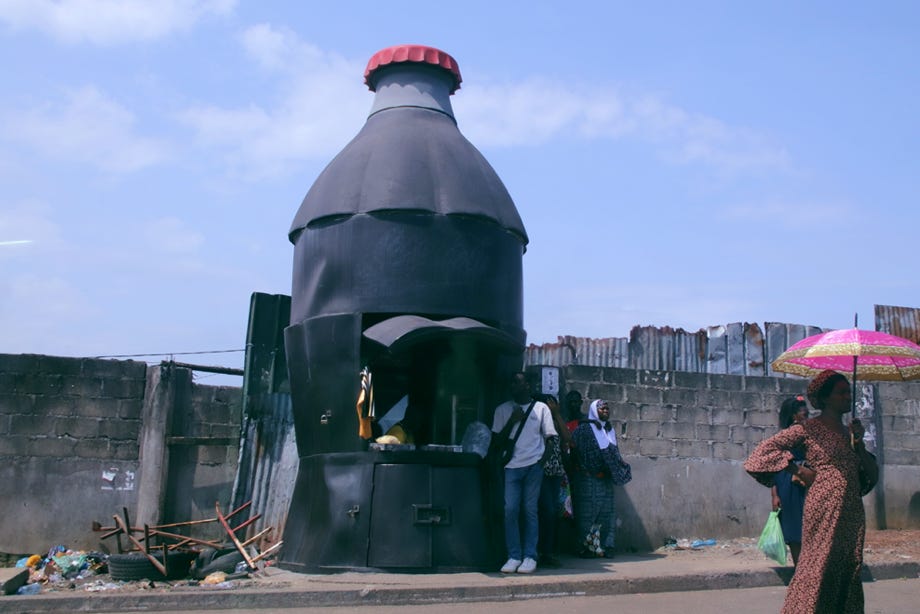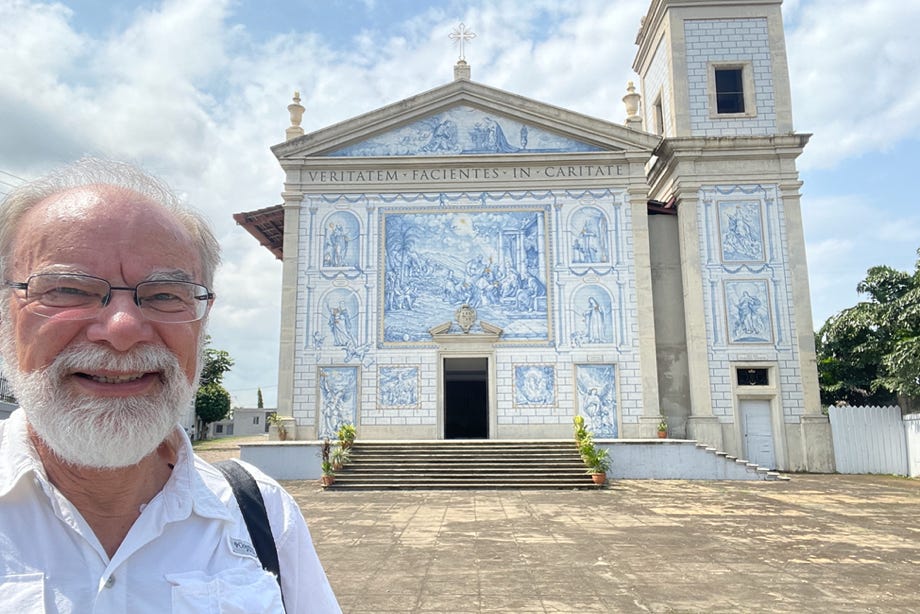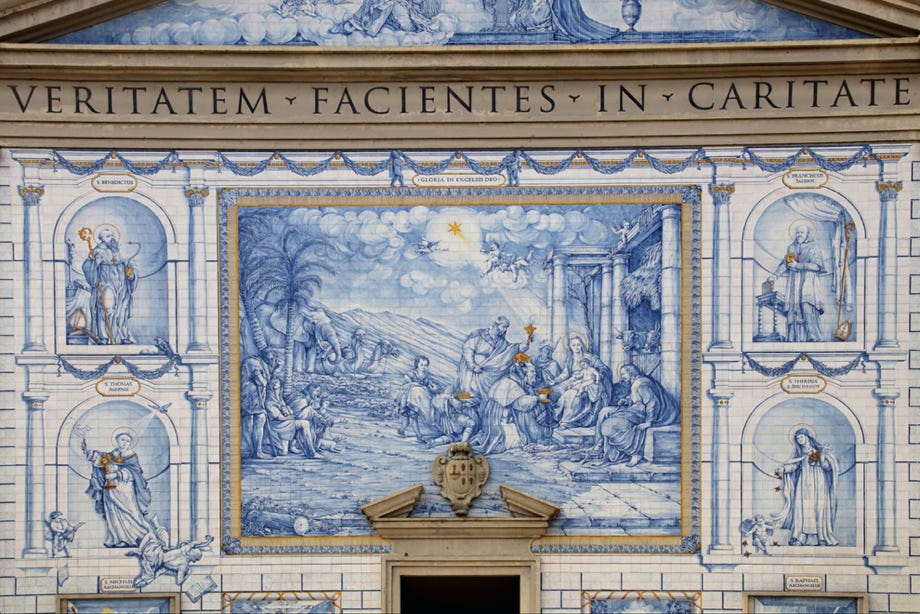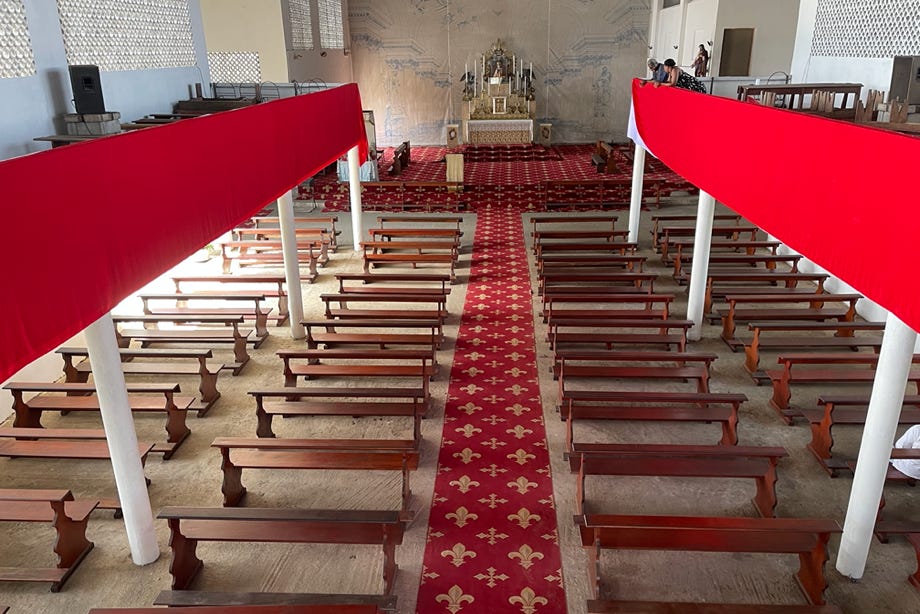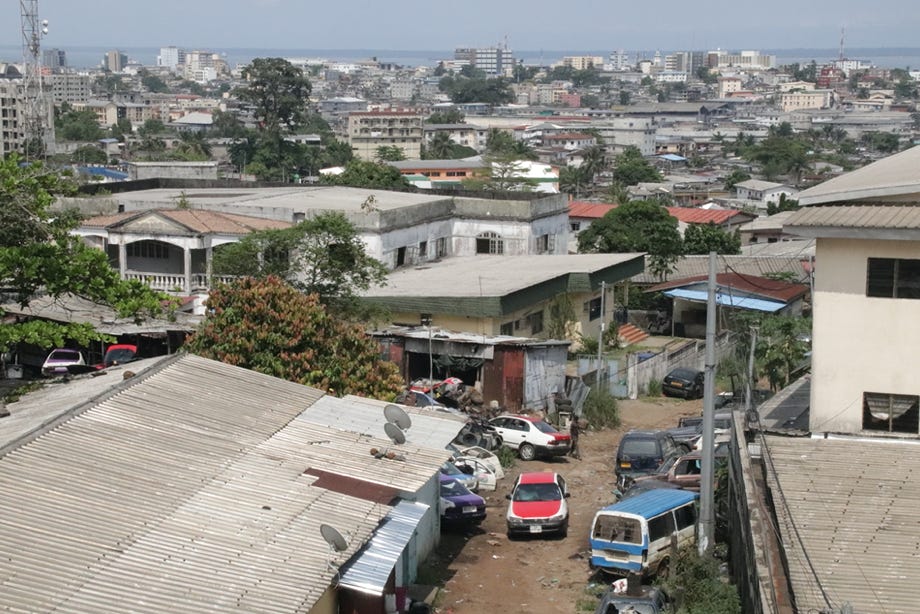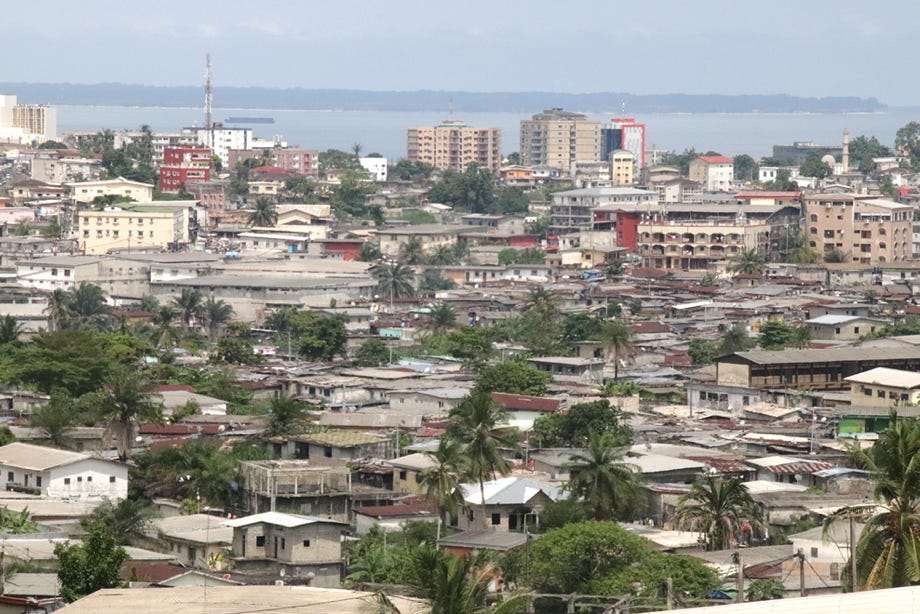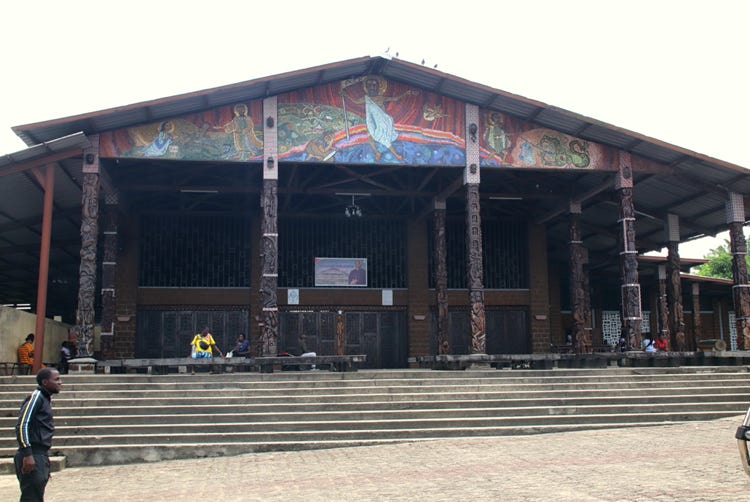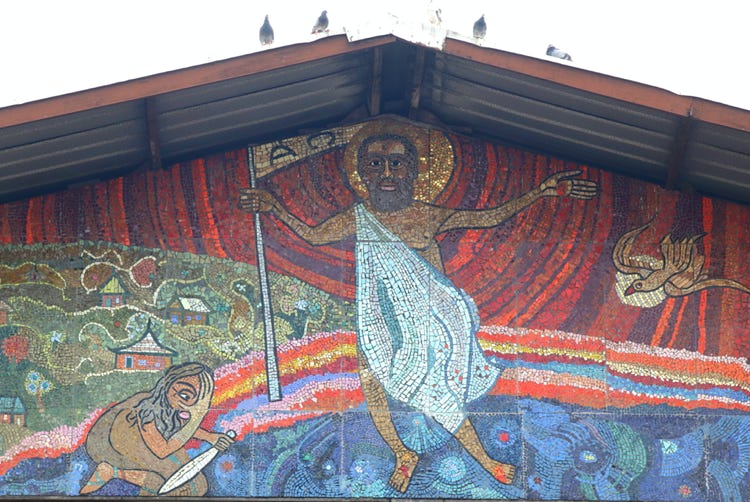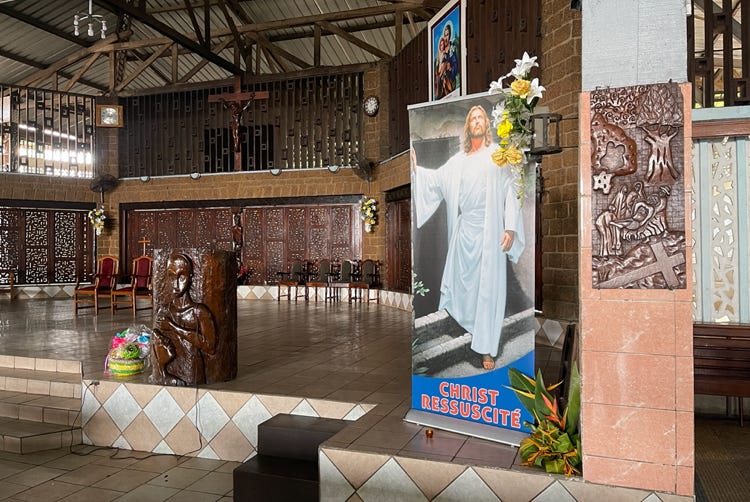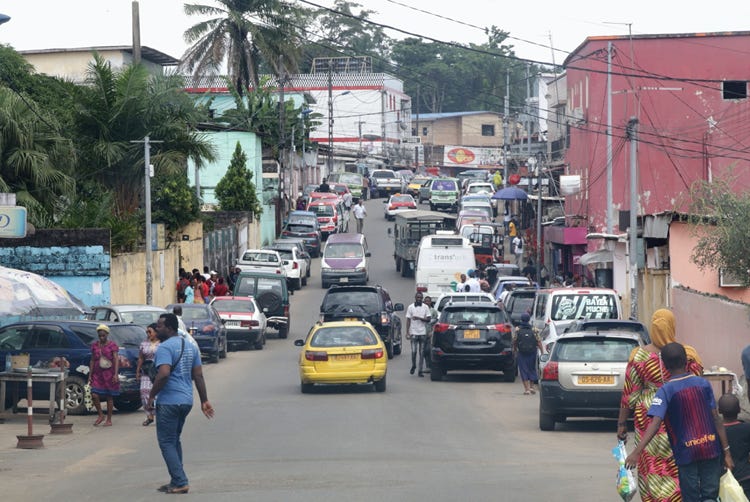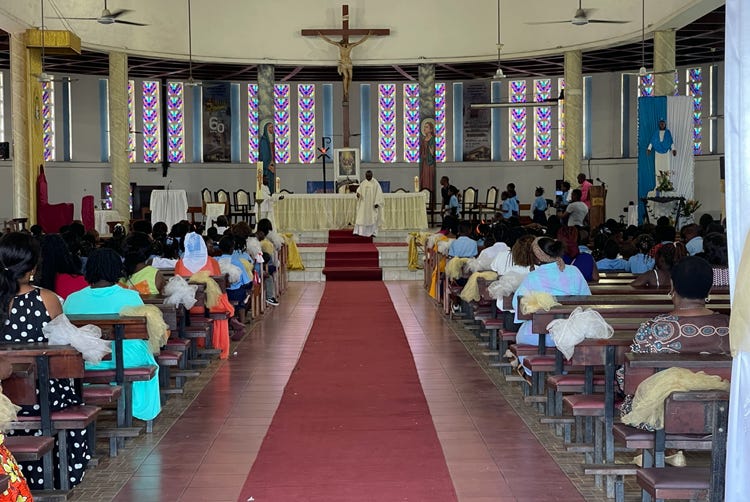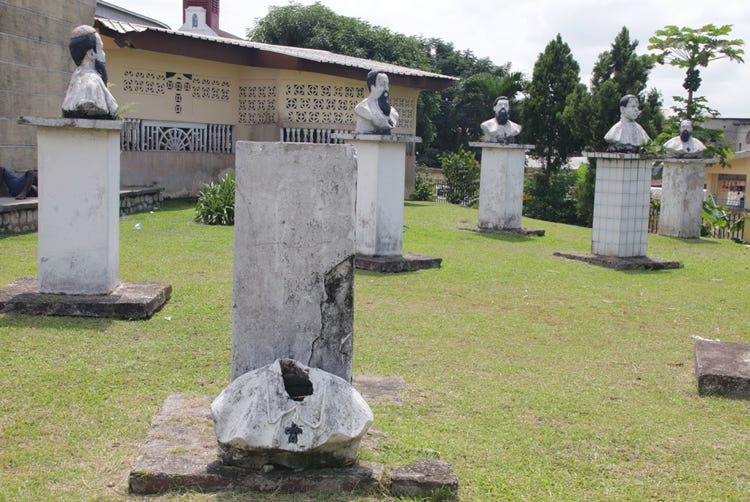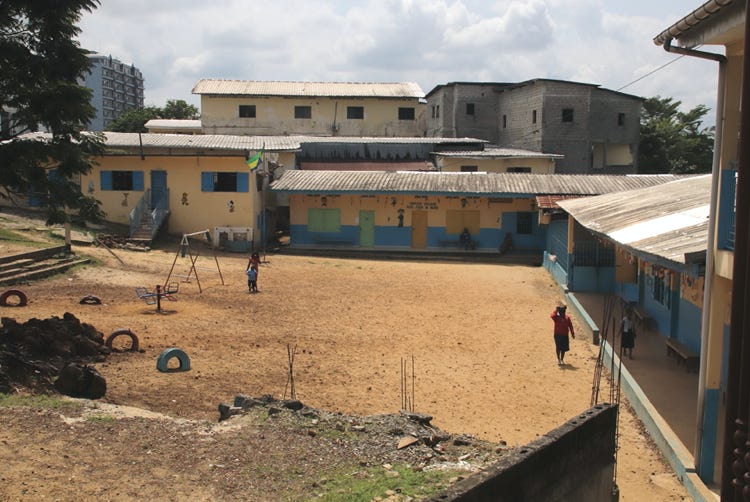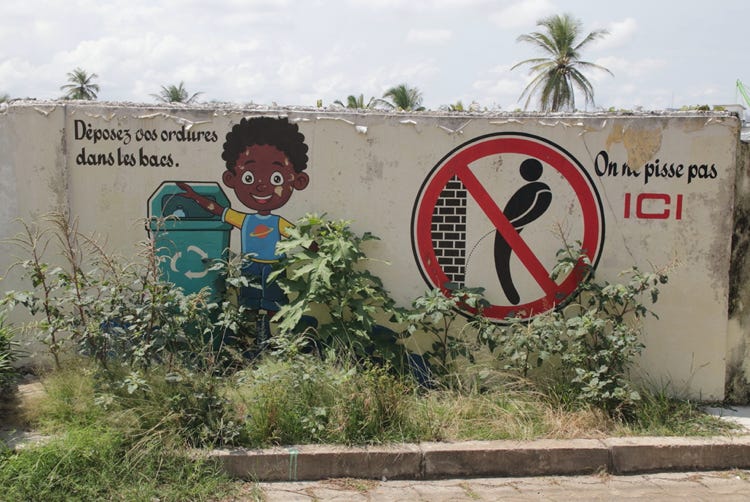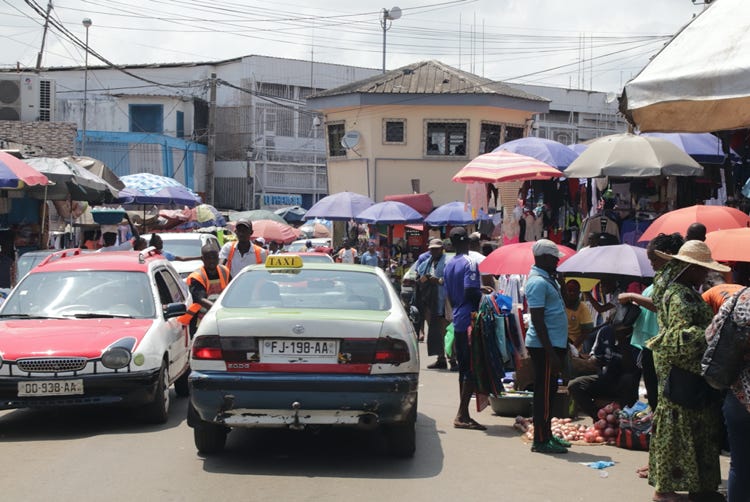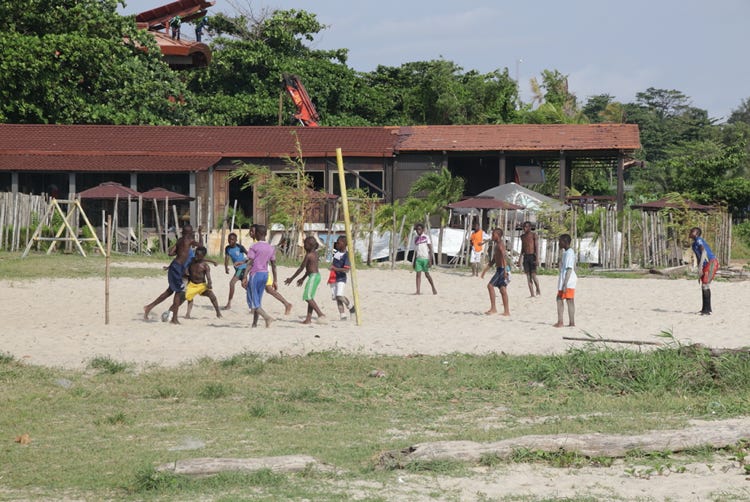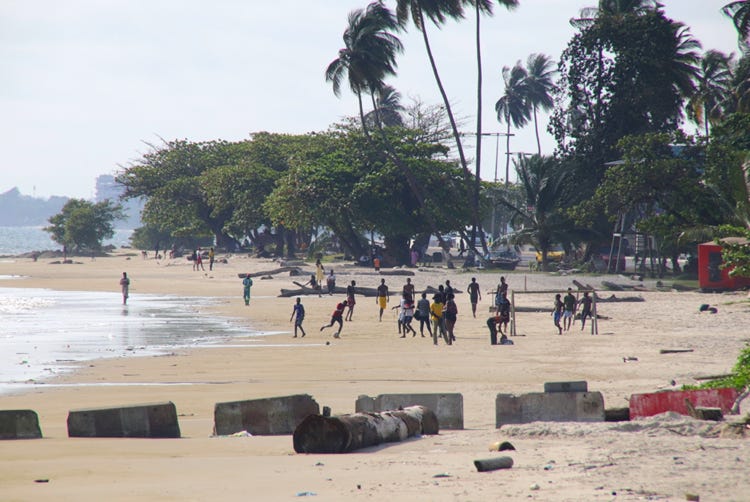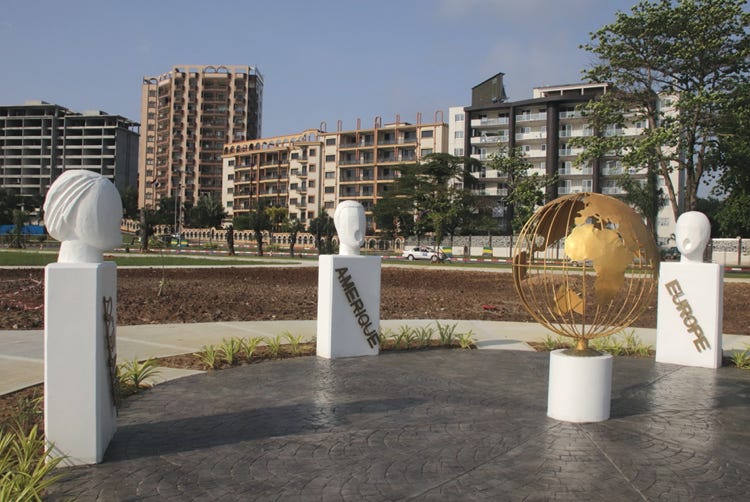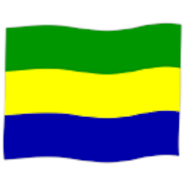
The guidebooks that discuss Gabon (or more precisely, the few pages within a handful of larger guidebooks which make passing references to Gabon) almost universally say that there isn’t much to see in the nation’s capital city, Libreville. That’s not entirely fair, although I did have sufficient time to take in most of the city’s interesting sights this morning before the heavy grey clouds with threats of rain arrived in the early afternoon.
By way of introduction, I have found Libreville to be a calm and well-ordered city (by African standards). Its coastal location brings refreshing sea breezes which are very welcome given the city’s location just north of the equator. The coastline comprises an almost unbroken stretch of white sandy beaches that would have been lined with resorts and luxury hotels populated by affluent tourists if they were in a more accessible location for the integrated global tourist industry. By contrast Libreville’s beaches are used by a handful of people, almost all of whom are local residents.
The main roads along the coast are lined with clean footpaths, trendy restaurants, and modern glass-and-concrete high rise office and residential buildings that reflect Gabon’s growing wealth from oil. However, away from the coastal strip the city is more crowded, low-rise, and pulsating with the vibrancy of life that characterises most African cities. Nonetheless, Libreville is calmer than many African capitals, in part (I suspect) because of its rising affluence and relatively small size; although Libreville contains one-third of Gabon’s population, the total number of people is a relatively modest 870,000.
I had arranged for a driver and car for getting around this morning – a roadworthy car with seatbelts, unlike the city’s taxis (a.k.a. rattling wrecks). The driver (Diallo) spoke no English so I had to immerse myself into using my schoolboy French, which fortunately came back to me fairly quickly. As I have found on previous trips through West Africa, French is far easier for me to use and understand in France’s former African colonies than in mainland France where the language is spoken much more quickly using far more complex grammatical structures that are mumbled rather than enunciated.
Diallo and I set off a little after 9:30am to do a circuit of potentially interesting places I had researched before leaving Australia. Diallo suggested adding two extra stops and these were our first destinations – the National Museum of Arts and Traditions and the nearby Village of Artisans.
To be honest, these destinations were disappointing even though entry to both was free. The National Museum of Arts and Traditions holds displays and performances periodically, but the only ‘event’ happening today comprised a few forlorn stalls selling old books. I didn’t stay long and took the short walk up the street and around the corner to the Village of Artisans. I was told that this area housed local artists making handicrafts, but it was really just a series of covered stalls selling local crafts. The masks, carvings, jewellery, dresses, cloth and so on were really beautiful, but browsing to admire them was rendered impossible by the zealous stall owners who came upon me like a swarm of admittedly polite but the nonetheless persistent mosquitoes. Perhaps the problem was that tourism is not well developed in Gabon and I was the only visitor in the entire Village of Artisans (and maybe the only tourist in all of Gabon?).
The itinerary I had assembled then took me to three interesting churches. The first was located on a hill several kilometres inland from the coast – l’Eglise Notre Dame de Lourdes (our Lady of Lourdes Church). A fairly recent construction (as far as I can tell in the absence of any real information), the exterior of this Catholic church is decorated with beautiful blue-and-white painted tiles from Portugal that are reminiscent of Delft-style ceramics. The interior is fairly plain with bare concrete floors and a simple strip of red carpet running along the central axis. The walls had been designed with significant wide gaps to direct a cross-flow of cool breezes. The wall behind the main alter was painted in a blue-and-white style that is reminiscent of the frontal exterior.
An unexpected surprise presented itself when I noticed a circular concrete staircase (with no railings) ascending upwards in the church’s tower. The concrete stairs stopped just a few metres below the landing near the summit of the tower, but fortunately there was a hand-made wooden ladder spanning the gap. It wasn’t a pleasant climb because the steps of the almost vertical ladder were each just a couple of centimetres thick and moreover the entire ladder was caked in a thick covering of (thankfully mostly dry) pigeon manure. However, the climb was well worth it as the platform afforded superb views across Libreville in almost every direction. I guess that in time the platform I reached will house a bell.
A short drive brought me to the second church, the Catholic Church of St Michael Nkembo which was built in 1964 in what is known as a pan-African style. The front of the church is supported by 31 carved wooden columns that depict various stories from the Old and New Testaments in traditional African style. Above the pillars are mosaics showing other significant Biblical events in African style, while the cool interior features additional carvings in African style.
The third church I visited was the Catholic St Mary’s Cathedral, built in 1958 on a hill near the coast that was formerly the site of Fort d’Aumale. Pope John Paul II visited the cathedral in 1981, an event that is still commemorated by a sign at the front of the building overlooking the main road. The cathedral operates a school across the street, and at the time of my visit a presentation ceremony for school children was underway in the cathedral. Behind the cathedral building is an earlier disused church dating from the 19th century – more architecturally pleasing than the current building, it is possibly under a slow process of renovation.
My final stop for the day was the bustling Marché Mont Bouët, Libreville’s hectic open-air market. Occupying several streets in the Mont Bouët district, the market comprises stalls lining the streets that leave almost (but not quite) enough space for people and cars to flow slowly, plus a few narrow side streets that are so filled by stalls that there is almost no room for the stall holders and their potential customers. The best adjectives to describe the market would be vibrant, loud, congested and colourful.
I returned to my hotel room to get through the heat of the early afternoon (and write today’s diary) before I headed out for a late afternoon walk along the beach across the road from my hotel. The temperature was still as high as it had been all afternoon, but at least the sea breeze made the 4.3 kilometre walk a thoroughly enjoyable experience. It was wonderful to see the beach being used by local children and youths playing soccer and other games.


